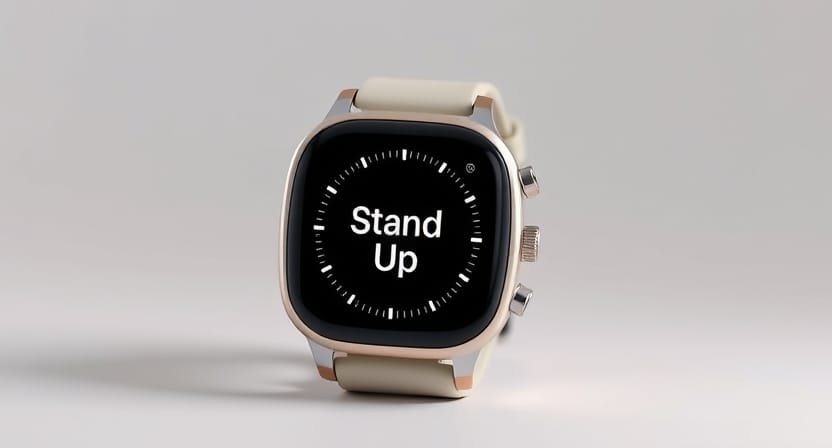Table of Contents
Introduction: A Dangerous Comparison
Imagine waking up every day, knowing you’re slowly contributing to a health epidemic, but you’re doing it without even realizing it. It’s not a metaphorical danger, and it’s not some abstract idea—it’s the very act of sitting for long periods, a behavior so ingrained in our daily lives that we often don’t see it as harmful. Yet, research is clear: sitting is killing us, just like smoking.
In a modern office, it’s all too familiar: you wake up, commute to work, sit at your desk for hours, attend meetings, grab a quick lunch at your desk, and sit some more. By the end of the day, you’re exhausted—not from being active, but from being sedentary. What many don’t realize is that this sedentary lifestyle is now considered just as dangerous as smoking. It’s time to understand why, and more importantly, what we can do to stop it.
In this post, we’ll explore how sitting for long stretches can lead to life-threatening health conditions, much like smoking. We’ll also share simple, actionable steps to combat this modern epidemic and reclaim your health—because reducing your sitting time isn’t just good for your body, it’s vital for your mind too.
What It Means: Understanding the ‘Sitting = Smoking’ Phenomenon
You might be wondering, how exactly can sitting be as harmful as smoking? It’s an eye-catching comparison, but it’s not without merit. A study published in the journal BMJ found that prolonged sitting increases the risk of heart disease, obesity, and diabetes—risks that parallel the dangers of smoking.
It’s not just a feeling. The American Heart Association has cited studies showing that sitting for more than six hours a day can increase the risk of cardiovascular disease by 147%. That’s a staggering statistic. In fact, the National Institutes of Health found that individuals who sit for seven or more hours a day have a 90% higher risk of developing Type 2 diabetes compared to those who stay active. This is no longer just about feeling sluggish; it’s about life-altering diseases that develop quietly, over time.
But it’s not just physical health that’s at risk. Prolonged sitting has been linked to mental health declines, including higher stress levels, feelings of anxiety, and even depression. The constant sitting can trigger a sense of fatigue and restlessness, which is often mistaken for low energy. In reality, it’s a reflection of your body’s natural need to move.

How Movement Contributes to Well-Being
The antidote to this sedentary epidemic is simple: move more. It’s one of the most powerful tools in the fight against modern-day health problems, and it doesn’t require hours in a gym. Research has shown that even short, frequent bouts of movement can reduce your risk for heart disease, diabetes, and other chronic conditions.
For example, a study from the Journal of Physical Activity & Health found that just 30 minutes of moderate exercise per day could lower your blood pressure and enhance insulin sensitivity, which helps your body regulate blood sugar levels. This can dramatically lower your risk of developing chronic illnesses.
But the benefits don’t stop there. Regular movement boosts mental well-being too. As your body moves, it releases endorphins, your brain’s natural “feel-good” chemicals. This reduces anxiety and stress, improves mood, and boosts energy levels. The American Psychological Association found that even moderate physical activity could reduce symptoms of depression and anxiety, giving you a more positive outlook.
Lastly, movement isn’t just for the body; it’s great for productivity too. Harvard Business Review reports that employees who engage in physical activity throughout the day show improvements in focus, creativity, and problem-solving. So yes, getting out of your seat and moving actually makes you better at your job!

The Science Behind Sedentary Behavior
Sitting for hours has serious biological and physiological consequences. Here’s why it matters:
- Metabolic Syndrome: Long hours of sitting lead to a slower metabolism, which means your body burns fewer calories. This increases the risk of conditions like obesity, high blood sugar, and abnormal cholesterol levels. Over time, this leads to metabolic syndrome, a precursor to Type 2 diabetes.
- Heart Health: Prolonged sitting also harms your cardiovascular health. Sitting impairs the endothelial function, the process that helps maintain the flexibility and health of blood vessels. This reduced circulation leads to an increased risk of blood clots, varicose veins, and even deep vein thrombosis (DVT).
- Musculoskeletal Health: Sitting places strain on your muscles, particularly in your lower back, hips, and shoulders. Over time, poor posture caused by sitting in a chair can lead to chronic pain. This is one of the most overlooked consequences of prolonged sitting—back pain, neck pain, and tight muscles.

Case Studies: Real-Life Transformations
Meet Sarah, a 35-year-old office worker who spent most of her workday sitting. She was dealing with chronic back pain and had gained weight. After researching the dangers of prolonged sitting, Sarah decided to take action. She began setting a timer to remind herself to get up and move every 30 minutes. She swapped her chair for a standing desk and started taking short walks during lunch breaks. Within six months, Sarah had lost 30 pounds, her back pain had almost completely vanished, and she felt more energized and focused.
John, a retired veteran, faced similar health issues. After realizing he was spending his retirement sitting in front of the TV, he joined a local walking group. His new routine improved his cardiovascular health, helped him lose 25 pounds, and gave him a renewed sense of purpose and connection to his community.
These personal stories serve as proof that small changes—whether it’s a walk during lunch or using a standing desk—can yield transformative results. Everyone has the power to break the cycle of sitting and take charge of their health.

Ways to Implement: Small Changes for Big Impact
You don’t need to overhaul your entire routine to see results. Try these small but effective changes:
- Use a Standing Desk: Switch your desk to a sit-stand desk or use a standing desk converter. This allows you to alternate between sitting and standing throughout the day.
- Take Movement Breaks: Set a timer to remind yourself to get up every 30 minutes. Use these breaks to stretch, walk around, or do some light exercises.
- Choose Active Options: Instead of emailing your colleague across the office, walk over. Take the stairs, not the elevator. Walk or bike instead of driving short distances.
- Reclaim Your Commute: Park farther from your destination or take public transport and walk from the station.

Technology and Tools to Move More
Tech has made it easier than ever to integrate movement into your routine. Smartwatches like the Apple Watch and Fitbit remind you to stand up after an hour of sitting. Additionally, standing desk converters are affordable, easy-to-use tools that turn your traditional desk into a more active workspace.
Many apps, like Move More or Stand Up!, send reminders to get up and move. They even set challenges for you to achieve goals like walking a certain number of steps or standing for a set amount of time each day.

Encouraging a Movement Culture: Community and Support
You don’t have to do this alone. Build a support system, whether it’s through your workplace, your family, or a community group. Support groups, walking challenges, and fitness competitions can help you stay motivated. Invite your coworkers to join a lunchtime walking group or participate in a weekend hike with your family.
Looking for other ways to enhance your daily routine? Check out our article on the power of micro-moments here, and discover how small habits can yield significant results!
Frequently Asked Questions
What is meant by ‘sitting is the new smoking’?
The phrase “sitting is the new smoking” refers to the growing body of research showing that prolonged sitting has similar health risks to smoking, such as increased risk of heart disease, obesity, and diabetes. This comparison highlights the dangers of sedentary behavior, which is often overlooked in modern lifestyles.
How many hours of sitting is too much per day?
Health experts recommend that you should avoid sitting for more than 7-8 hours a day. The key is to break up long periods of sitting with physical activity, such as standing, walking, or stretching every 30 minutes to an hour.
What are the risks of a sedentary lifestyle?
A sedentary lifestyle is linked to various health risks, including obesity, cardiovascular disease, type 2 diabetes, and certain types of cancer. It can also negatively impact mental health, leading to issues like stress, anxiety, and depression.
How can I reduce my sitting time at work?
To reduce sitting time, try using a standing desk, taking short breaks every 30-60 minutes to walk or stretch, and incorporating physical activities like walking meetings or using the stairs instead of the elevator.
Can sitting for long hours cause back pain?
Yes, sitting for extended periods can lead to poor posture, muscle imbalances, and back pain. It’s important to ensure your workstation is ergonomically friendly and to take breaks to move and stretch.
What are some easy exercises to do at home to combat a sedentary lifestyle?
Simple exercises like bodyweight squats, lunges, walking or running in place, stretching, and yoga can help reduce the negative effects of prolonged sitting. Aim for at least 30 minutes of moderate activity a day.
How does regular movement improve mental health?
Physical activity boosts the production of endorphins, which are chemicals in the brain that improve mood and reduce stress. Regular movement also helps to combat feelings of anxiety and depression, leading to a more positive mindset.
Actionable Takeaways and Call to Action
Combat the sedentary epidemic by making simple changes today. Set timers to stand up every 30 minutes, invest in a standing desk, and walk more throughout your day. Commit to moving—your body and mind will thank you.
What changes will you implement today to reduce your sitting time? Share your thoughts and tips in the comments below. Let’s start a conversation and inspire each other to move more!











2 thoughts on “Sitting = Smoking: The New Epidemic of Sedentary Lifestyles and How to Combat It”